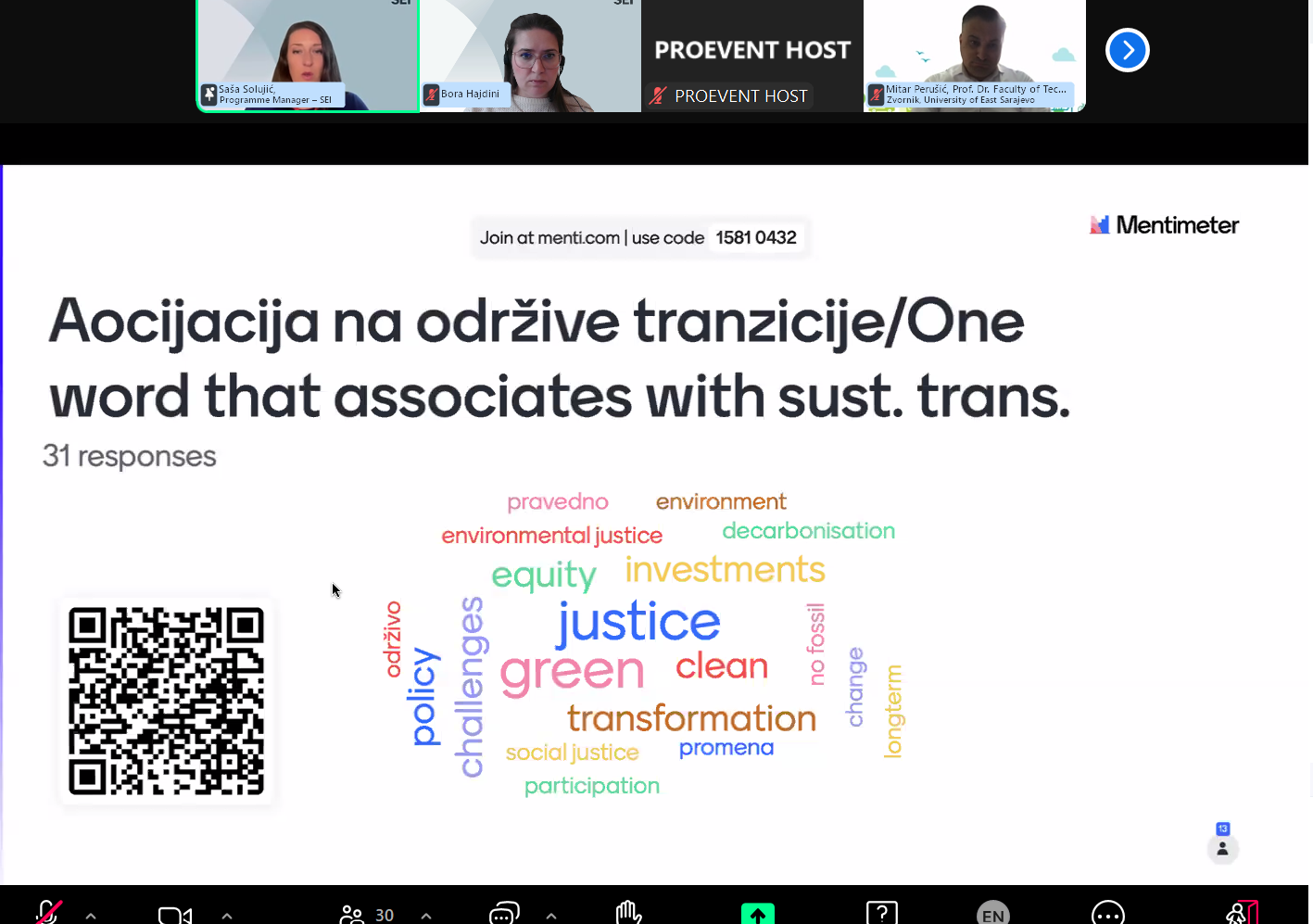

In a recent webinar, we explored foresight—the discipline of systematically exploring and anticipating the future. Harnessing strategic foresight allows us to anticipate future challenges and opportunities, guiding us toward sustainable transitions in Bosnia and Herzegovina.
On 13 June, the Stockholm Environment Institute (SEI) hosted a virtual event titled “Foresight: How to use it for sustainable transition in Bosnia and Herzegovina?” as part of the Sustainable Transition of Bosnia and Herzegovina (BiH SuTra) programme, funded by the Swedish International Development Cooperation Agency (Sida) in Bosnia and Herzegovina. This event examined the foresight discipline, its role in navigating problems, and designing alternative pathways for achieving sustainable futures. It builds upon a previous webinar held on 28 May, focusing on megatrends, follow this link to read the news article and watch the recording of that event.
What is a sustainable transition?
Saša Solujić, programme manager at SEI, gave opening remarks explaining the concept of sustainable transition. As a warmup, she asked the audience to name one word they associate with a sustainable transition. The results can be seen in the word cloud below. Solujić emphasized the importance of policies supporting innovation, new technologies, and behaviours, while phasing out unsustainable policies: “Strategies and policies are crucial; it's vital to engage stakeholders at multiple levels and ensure their active participation in decision-making processes. This involves fostering vertical coordination between government levels and collaborating with professional organizations. People are at the heart of the transition, as all efforts aim to improve their future.”

How do we change the system?
Marcus Carson, senior research fellow at SEI, elaborated on systemic change, associating it to playing chess rather than following a roadmap: "What truly facilitates or impedes change are the social processes at play—the social constructions in our minds as we perceive the world, the rules we establish, and the organizations we associate with. Understanding these aspects enables us to strategically and effectively navigate change." Marcus further emphasized that individuals and organizations are key agents of change, driven by their own and future generations' quality of life.
Foresight - context and role
Sara Talebian, research associate at SEI, delved deeper into the tools and techniques necessary for policymakers to accelerate sustainable transition. She explained foresight as a toolbox for decision-makers to set context-specific sustainability goals, adaptive targets, milestones, and to shape alternative pathways for just transitions and sustainable development planning. She described the importance of foresight and concluded that “it is not far out to acknowledge that future thinking and foresight are as essential for sustainability transition as appropriate funding or as in safeguarding social cohesion or trust in governments”.
Challenges and barriers of applying foresight methodology
After the introductory addresses and presentations, a dynamic panel discussion unfolded, focusing on the challenges and barriers associated with the foresight methodology. Moderated by Saša Solujić, the panel featured insights from three distinguished experts: Sara Talebian, a research associate at SEI; Prof. Dr. Mitar Perušić from the Faculty of Technology in Zvornik at the University of East Sarajevo; and Sanjin Avdić, senior programme coordinator in BiH SuTra. The discussion explored the complexities of planning transitions and forecasting future activities in Bosnia and Herzegovina.
"Implementing foresight processes for sustainable transition is particularly challenging," Sara Talebian noted, emphasizing the diverse institutional, political, resource, and regulatory obstacles encountered across different countries and contexts. Prof. Dr. Mitar Petrušić highlighted Bosnia and Herzegovina's struggle to monitor current situations due to inadequate data across various statistical units. Finally, Sanjin Avdić underscored the nuances involved in developing forward-looking policies, setting goals, prioritizing actions, and addressing the unique local needs of the region.
Conclusion
The webinar provided valuable insights into the discipline of foresight and its critical role in guiding sustainable transitions, particularly within Bosnia and Herzegovina. By exploring alternative futures, anticipating challenges, and designing effective actions, foresight offers a powerful tool for policymakers and stakeholders to navigate complex socio-technical systems.
However, implementing foresight methodologies presents numerous challenges, including institutional barriers, political interests, resource constraints, and data deficiencies. Addressing these challenges requires concerted efforts across multiple levels, involving collaboration among diverse stakeholders and the adoption of adaptive strategies.
Despite these hurdles, the webinar underscored the importance of foresight in driving positive change and fostering a just transition toward a more sustainable future for Bosnia and Herzegovina.
See this link for more information about the speakers and the programme.
See the recording of the webinar “Foresight: How to use it for sustainable transition in Bosnia and Herzegovina?” below.
Discover the News and Updates section, delivering the latest updates and insightful content across various topics. Stay informed with most recent news articles, reports, and publications, of the BiH SuTra project.